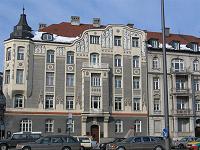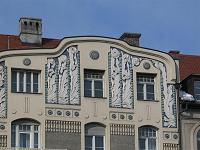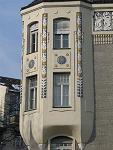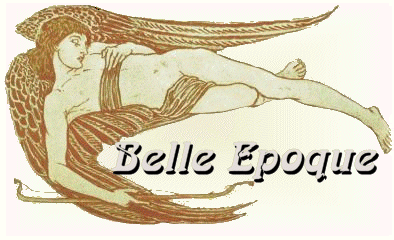The Belle Epoque in Europe
Germany
Munich (Bavaria)
1892: The First Secession
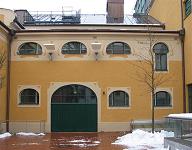
At the end of the 19th century, Munich was an attractive place for German artists of every origin and style desiring to create something new. It was a young, modern, and exciting city allowing the artists to invent new styles. New art was noticed attentively and intensively, where it is to be mentioned that the Munich style often was of a playful nature and indeed based on traditional styles like historicism or baroque. And it is important to say that the German kind of Art Nouveau, the Jugendstil (style of the Youth), got its name by a cultural review published in Munich, the Jugend (Youth)..
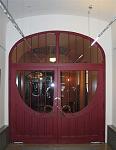
Regarding the other secession movements in Europe, Munich also has historical merits because of the foundation of
the Munich Secession in 1892 and of the creation of the avant-garde Vereinigte Werkstätten für Kunst im
Handwerk (Unified Workshops for Art in Handicraft) in 1898. The city had become a meeting point for artists of any
kind and any genius forming a sort of international Boheme of which the cultural and spiritual centre was in Schwabing,
the former village on the border of the city. Around the central personage of the "prince of the artists" Franz
von Stuck (1863-1928) were among many others August Endell (1871-1925), Hermann Obrist (1862-1927),
Richard Riemerschmid (1868-1957), Bruno Paul (1874-1968),
Leo Putz (1869-1940), Thomas Theodor Heine (1867-1948) as well as the great Jugendstil artist and architect
Peter Behrens (1868-1940). The literary circle consisted mainly
of Stefan George (1868-1933), Ludwig Thoma (1867-1921), Frank Wedekind (1864-1918), Karl Wolfskehl (1869-1948), Otto Julius
Bierbaum (1865-1910), Thomas Mann (1875-1955) and Rainer Maria Rilke (1875-1926).
The arts and crafts in Munich created around 1900, the ceramics, the china, were in a positive manner popular, direct, and
of beautiful and simple intention, rather of decorative and applied nature than fine arts. Besides arts and crafts, it was
the graphical creation which brought the Munich Jugendstil far beyond the city's borders.
The Munich Secession
In April 1892, more than a hundred artists associated by founding the Verein bildender Künstler Münchens e. V.
Secession (Association of fine artists in Munich Secession). It was a true and real secession since three quarters of them
still were members of the Königlich-privilegierte Münchener Künstlergenossenschaft (MKG) (Privileged
Royal Artists' Association of Munich) being under the "tyrannic" influence of the "painters' prince" Franz
von Lenbach (1836-1904). In the Secession participated among many other famous artists Franz von Stuck,
Peter Behrens, Max Liebermann (1847-1935) and Lovis Corinth
(1858-1925); they refused the historicism propagated by the academies and wanted to create something new. One of their maxims,
characteristic for Art Nouveau world-wide, was that art concerns the whole man and the whole social life.
Lenbach did anything he could by using his leading position and his influence upon the regent Luitpold and the minister of cultural
affairs Müller to intrigue against the Avant-Garde, but nevertheless, in summer 1893, the first international exposition of the
Secession took place. Lenbach's opponents were the collectioner of art and editor of the Jugend Georg Hirth, the socialist
leader Georg von Vollmar and the count of Toerring-Jettenbach; their engagement for the secessionists resulted in official recognition
of the young artists' search for new expressive possibilities.
Within the same year, another group of artists left the MKG and founded the "Luitpold group". In 1899, a group of painters
all being in the staff of the Jugend" founded another artists association of the name Group G.
But far more important for the Munich Jugendstil than the Secession because influencing it in a decisive manner was the foundation of
the Vereinigte Werkstätten für Kunst im Handwerk (Unified Workshops for Art in Handicraft) in 1898. Nonetheless, the
Secession was in principle solidary with all new founded artists associations, and it still took some years before
Berlin and Vienna should follow Munich's example.
Die Jugend (The Youth)
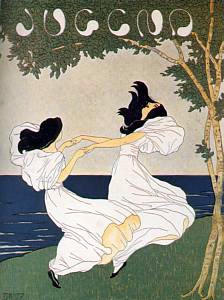
It was in January 1896 that the Munich editor Georg Hirth founded the review. It designed itself as a "Periodical for Art and
Life" observing styles and developments of art at the end of the century especially in Germany, but also informing about graphical
innovations abroad. Nearly every Jugendstil artist of Munich has worked sporadically or regularly for it.
Although the Jugend had nearly nothing to do with the origins and the developing of the Jugendstil, they will always remain tied
together due the fact that the German Art Nouveau got its name from the review. Very famous became the vignettes of Otto Eckmann
(1865-1902) and the coloured sheets of Hans Christiansen (1866-1945) which followed the slogan of the Jugend published
in the first edition: "Anything that follows the traditional has to be excluded." The innovation and hardiness of the
illustrations and the ornamentations had without any doubt a considerable influence on graphical and book printings in Germany
at the end of the century.
Nonetheless it has to be mentioned that besides the impressioning artistic equipment, the contents of the Jugend were chosen
far less carefully and everything that was supposed to meet the new public taste was published. Therefore, besides fresh, frivolous,
and true art, you could also find sentimental, boring trashy things up to kitsch.
Vereinigte Werkstätten für Kunst im Handwerk
(Unified Workshops for Art in Handicraft)
Originally and in the first place, the rising of the Jugendstil is due to the decorative arts; so its development in Munich, too,
is due to the foundation of the Vereinigte Werkstätten which took place in 1898 in course of the Exposition for Arts
and Crafts demonstrating that many young artists, for a long time already, had worked on a revival of the crafts. The intellectual
and artistic leader of the movement was Hermann Obrist.
Mainly two problems occupied the young artists: They had to learn the technical conditions of the handicraft, and, after accomplishing
the artistic creation, had to make profit of it. For both these aims, the Vereinigte Werkstätten were founded. They bought
the young artists' projects or supplied them orders for interior decorations which were afterwards executed by professional craftsmen
or industry enterprises. Moreover, the art works were presented and offered to the public in permanent or temporary expositions, and
often the artists got a percentage of the proceeds. So the artists were independent of economic problems and could devote their whole
creation power to the development of a modern art of daily life. When the Vereinigte Werkstätten presented complete interior
decorations at the World Exposition of 1900 in Paris, they had an enormous success.
Afterwards, the Werkstätten, in order to produce less expensive, founded their own manufactory, especially for cabinet-makers with
smaller workshops for metal works, embroidery and weaving.
For many years, the Werkstätten were the centre of the most talented Munich artists of the modern commercial art. Besides the
original founders, Hermann Obrist and F. A. O. Krüger (born 1875), there were especially
Richard Riemerschmid, Bernhard Pankok (1872-1943), Bruno Paul and
Paul Haunstein (1880-1944) influencing the characteristics of the art works of the Vereinigte Werkstätten.
